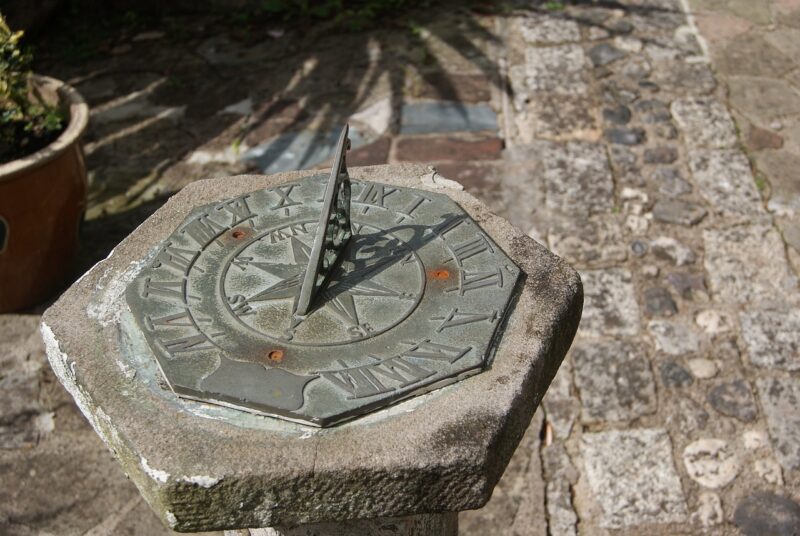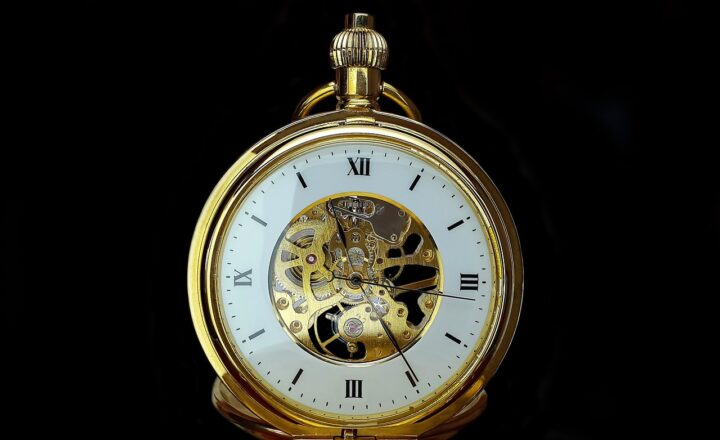
Time is a constant companion in our lives, shaping our schedules, aspirations, and even our very identities. From the ancient sundials of Babylon to the intricate mechanical clocks of the Renaissance, humanity has found inventive ways to measure, celebrate, and sometimes even manipulate time. This article will explore the evolution of timekeeping devices, their cultural significance, and how they’ve altered our perception of time through history.
1. The Ancient Sundials: Measuring Time with Shadows
The sundial is one of the earliest devices used to mark the passage of time. Dating back to ancient civilizations such as the Egyptians and Babylonians, it works by casting a shadow on a flat surface marked with the hours of the day. As the sun moves across the sky, the shadow indicates the time.
Sundials were more than mere timekeeping devices; they were often intricately designed works of art. For example, the famous Tower of the Winds in Athens featured a sundial alongside other astronomical devices, showcasing the ancients’ deep understanding of both time and celestial motions.
Sundials also played a significant role in various cultures. In Hinduism, time is cyclical, with cosmic cycles reflected in timekeeping. Ancient Roman sundials, on the other hand, not only measured time but were also employed in public spaces to remind citizens of their daily duties.
2. The Mechanical Clock: A Revolution in Timekeeping
The advent of mechanical clocks in Europe during the late Middle Ages revolutionized how people perceived time. Unlike sundials, which depended on sunlight, mechanical clocks could keep time at any hour of the day or night. This breakthrough broadened the definition of time as a fixed concept, creating societal pressures and expectations around punctuality.
Medieval monasteries first utilized mechanical clocks for regulating monastic schedules, calling monks to prayer at specific times. By the 14th century, towns began to install public clocks, offering a communal way to synchronize daily activities. The famous astronomical clock in Prague, built in 1410, showcased the peak of medieval mechanics and served as an elaborate focal point in public life.
The craftsmanship of these clocks often reflected the cultural values of the time. Elaborate designs with intricate gears and motifs conveyed a sense of human ingenuity and artistic achievement, while basic models exemplified practical necessity.
3. The Mechanical Clock’s Cultural Impact
As mechanical clocks became more common, their implications on society were far-reaching. The regulation of time began to dictate the structure of daily life. Individuals started to become more aware of hours and minutes, shaping industry, commerce, and even relationships.
Time eventually became commodified. The Industrial Revolution marked a significant turning point when workers were required to adhere to strict schedules. Punctuality transformed into a virtue, altering the social fabric and redefining concepts of labor and productivity.
Art and literature began to reflect this newfound fascination with time. Writers like Virginia Woolf and Marcel Proust explored how memories and experiences could impact one’s perception of time. In many ways, the mechanical clock paved the way for modern sensibilities regarding time management and efficiency in life.
4. Contemporary Celebrations of Time
In modern times, we celebrate time through various means, ensuring its significance permeates our daily lives. Special occasions are marked by time—the New Year’s countdown or the hourly ringing of church bells. Festivals embrace this theme, where time’s passage is honored through rituals and traditions.
The wristwatch has emerged as a blend of art, utility, and celebration, signifying personal style and sophistication. Luxury brands such as Rolex and Patek Philippe have made horology a symbol of prestige and success. Limited editions and collaborations add to the allure, transforming every timepiece into a collectible memory of time celebrated.
Moreover, in today’s fast-paced world, time itself has become a commodity. With online calendars and productivity apps, managing time efficiently is almost an art form. Social media platforms use time to bind communities, where live events become joyous occasions to celebrate collectively.
5. The Future of Timekeeping: Where Are We Headed?
As technology continues to evolve, the future of timekeeping is likely to face incredible transformations. With smartphones integrated into every aspect of life, traditional methods might seem outdated, yet the desire to celebrate time remains vibrant.
Smartwatches are starting to redefine how we measure time, incorporating health features, notifications, and even augmented reality. Such devices may evolve to create a holistic experience surrounding time, merging it with other elements of modern life.
Furthermore, discussions on time’s relativity—particularly in scientific fields like physics—challenge our conventional understanding of this once rigid concept. Quantum clocks could potentially redefine timekeeping’s precision, opening new avenues for understanding existence itself.
Ultimately, the continued celebration of time through various devices will persist, as it reflects our innate desire to capture moments and measure our lives. Each tick of the clock reminds us of life, urging us to cherish every moment.
Conclusion
The story of how we celebrate time through clocks and sundials offers insight into humanity’s relationship with this elusive concept. From ancient sundials that connected societies to the mechanical clocks that structured daily lives, each advancement signaled changing attitudes toward time.
As we embrace new technologies and understandings of time, one thing remains constant: our desire to celebrate the moments that shape our experiences. Whether through the tick-tock of a clock or the shadow of a sundial, time will always be a special part of our journey.
Embracing time is more than merely measuring minutes; it’s understanding our past, celebrating our present, and anticipating our future.







